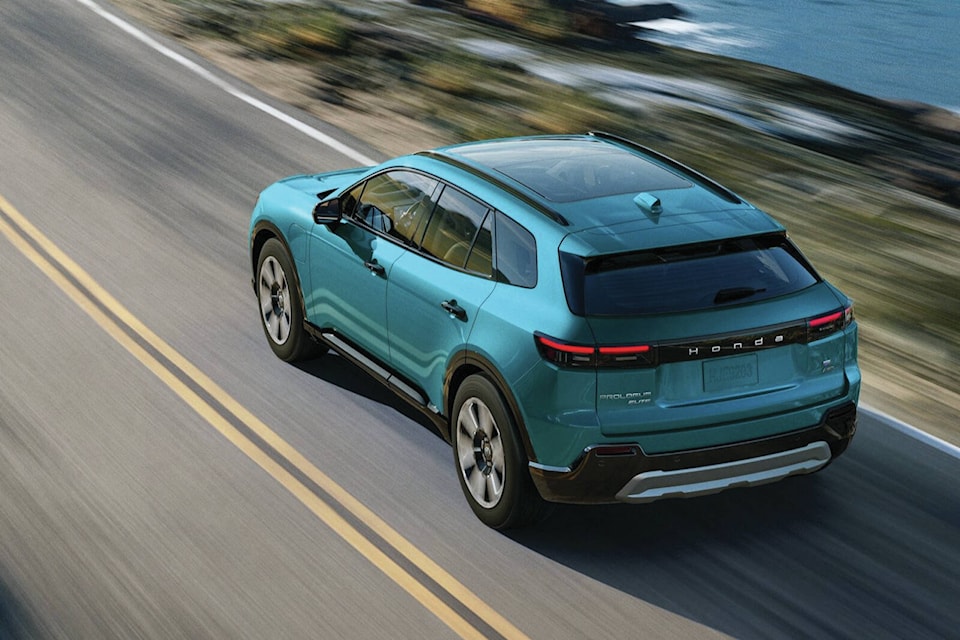The Honda Prologue is a hybrid of sorts but not in the way you might think.
The five-passenger utility-style vehicle, which is one of 30 planned electric vehicles Honda said it will introduce globally by 2030, will be available starting in early this year.
The Prologue results from a collaborative effort with General Motors, which supplies the Ultium battery platform and powertrain, while Honda’s California-based stylists are responsible for the attractive bodywork. Their stated goal was to maximize the Prologue’s aerodynamics for driving range, while minimizing wind noise.
The Prologue is built at a factory in Mexico that will also assemble the Chevrolet Equinox EV.
Why is this collaboration taking place? The fast answer is that Honda’s electric platform is not done, but the brand needs to get an EV to market now. GM, then, appears to be a logical partner.
As a point of clarification, the Prologue isn’t Honda’s first EV. The Honda Fit EV subcompact was a 2014-only model, and the Clarity Sedan EV was briefly offered for model years 2017-’19. Both vehicles were available — for lease only — in California and Oregon. With a maximum range of about 130 and 140 kilometres, respectively, neither one was destined to become a serious category contender.
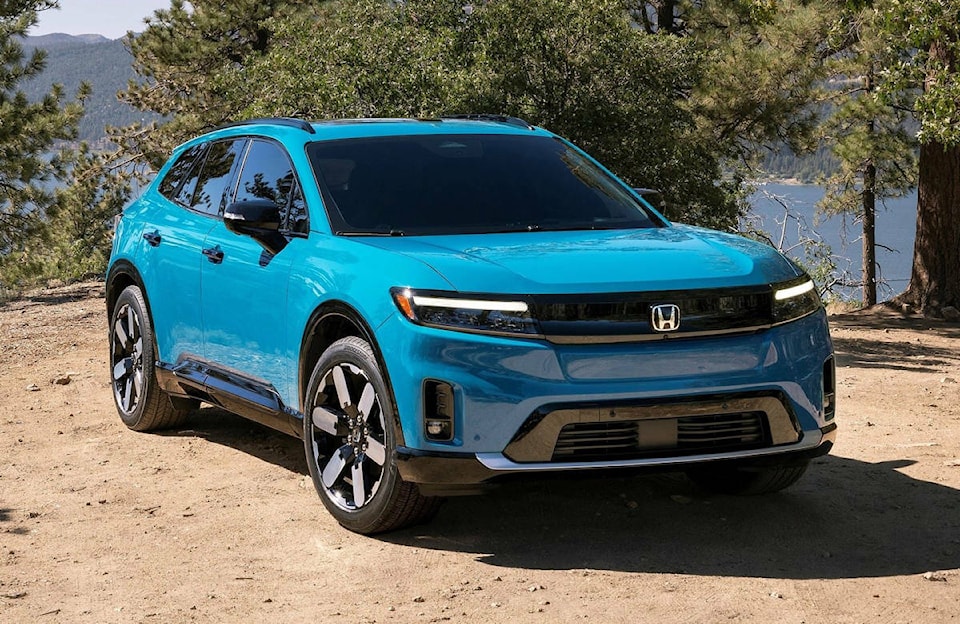
Compared with the Honda CR-V compact utility vehicle, the Prologue is about 20 centimetres longer, 13 centimetres wider and it has a 41 centimetre advantage in distance between the front and rear wheels. It’s a big vehicle.
The CR-V holds a significant advantage in cargo capacity, with the rear seat upright or folded flat, mainly because of its taller and flatter roofline. Unlike some other EVs, the Prologue doesn’t offer a stowage spot beneath the hood, commonly referred to as a frunk.
The interior focus is on the 11.3-inch driver information display and 11.3-inch touch-screen with Android Auto and Apple CarPlay connectivity. Google maps can be conveniently displayed on either screen. A finger rest below the touch-screen allows users to steady their hands when initiating selections while the vehicle is in motion.
A column-mounted shifter, instead of a dial in the console, results in more space between the seats for stowing smaller items.
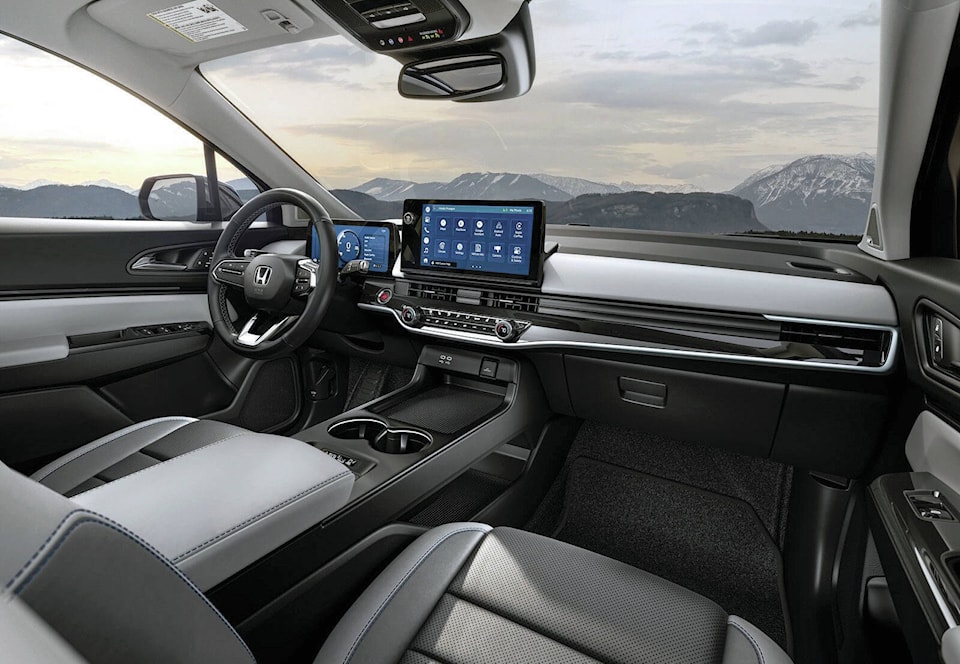
The audio volume control is inconveniently located within the touch-screen, but at least there are separate knobs and switches for operating the heating/ventilation system.
The Prologue EX (the base model), EX-L and Touring are equipped with front and rear electric motors that produce a net 288 horsepower and 333 pound-feet of torque. An 85-kilowatt-hour lithium-ion battery pack is standard. An estimated maximum range of 450 kilometres is projected.
According to Honda, the Prologue charges at a rate of 104 kilometres of range for every 10 minutes hooked to a commercial-grade Level 3 DC station. Honda has provided no other numbers, but a 240-volt home station will be considerably slower.
The Prologue starts at $61,990, including $2,000 delivery, and qualifies for federal and provincial zero-emission vehicle rebates. For the first two model years, however, the Prologue will only be sold in British Columbia, Ontario and Quebec.
The three trim levels also come with a range of active-safety technology as part of Honda Sensing. Included are rear-cross-traffic braking, blind-zone steering assist and rear pedestrian alert.
The base EX comes with dual-zone climate control, heated front seats and an eight-way power driver’s seat with power lumbar support.
The EX-L comes with a panoramic sunroof, upgraded interior with leather seating surfaces, auto-dimming rear-view mirror, wireless phone charging, 12-speaker Bose audio system, hands-free power liftgate and front and rear parking assist.
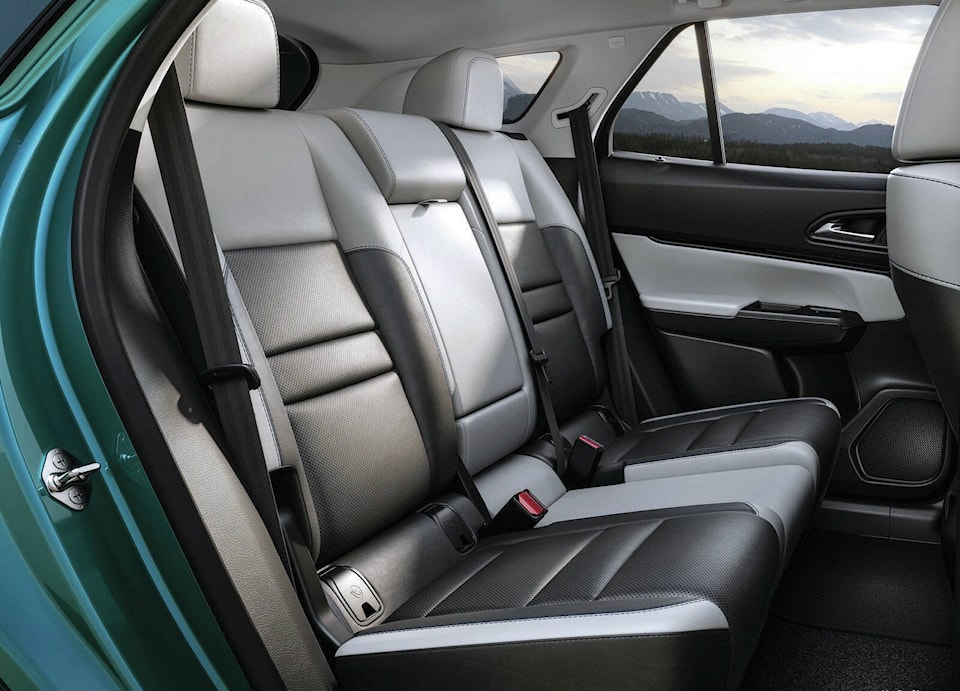
Selecting the top-level Touring gets you perforated leather seating (ventilated in front), head-up driver’s display, heated steering wheel and 21-inch wheels (19s are standard).
The Touring’s Sport driving mode provides more immediate throttle and steering responses and adjusts braking function for quicker stops.
As a business venture with GM, the Prologue is a neatly packaged vehicle with plenty of the right stuff to entice first-time EV buyers. But for all the Prologue’s goodness, will Honda customers be content with driving GM technology?
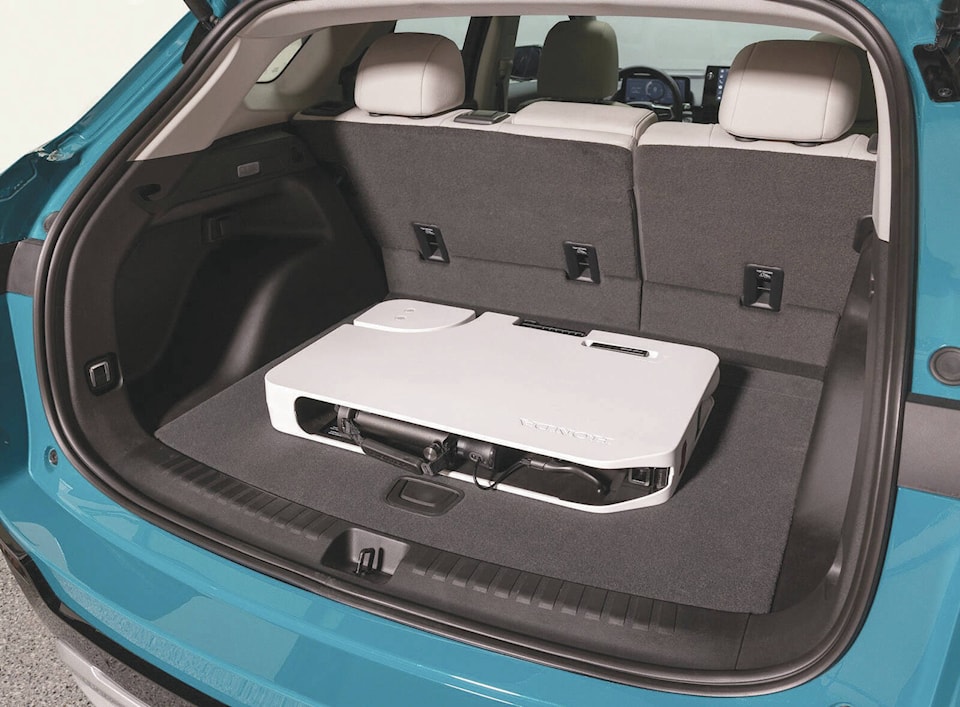
What you should know: 2024 Honda Prologue
Type: All-wheel-drive midsize utility vehicle
Motors (h.p.): Dual electric (288)
Transmission: Single-speed controller
Market position: Honda has previously dabbled with battery-electric propulsion, but the Prologue is the automaker’s first mass-produced effort, albeit supported and assembled by General Motors.
Points: Conservatively attractive bodywork. • Spacious passenger compartment, especially for rear-seat riders. • Dual-motor powertrain output and driving range should prove more than adequate. • Base models come well-equipped with sufficient comfort and dynamic safety technologies. • A future Acura EV (the ZDX) will be built using similar power systems.
Active safety: Blind-spot warning with cross-traffic backup alert (std.); active cruise control (std.); front and rear emergency braking (opt.); inattentive-driver alert (std.); lane-departure warning (std.); pedestrian warning (std.); front and rear parking assist (opt.)
Le/100 KM (city/hwy): n.a.
Base price (incl. destination): $62,000
BY COMPARISON
Chevrolet Equinox
- Base price: $51,500
- Well-priced EV will offer similar content and performance to the
Hyundai Ioniq 5
- Base price: $57,650
- Good-looking RWD or AWD EV can be had with up to 641 horsepower.
Nissan Ariya
- Base price: $56,800
- Nissan’s newest EV comes with FWD or AWD. Up to 389 h.p.
– written by Malcom Gunn, Managing Partner at Wheelbase Media
If you’re interested in new or used vehicles, be sure to visit to find your dream car today! Like us on and follow us on
